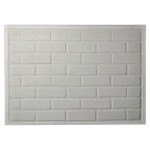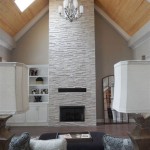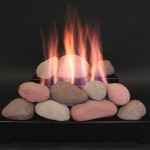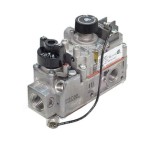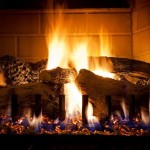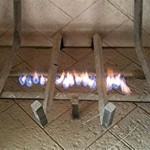Gas Fireplace Vent Pipe Size: A Comprehensive Guide
A gas fireplace can be a delightful addition to any home, providing warmth and ambiance. However, it's crucial to ensure proper ventilation for safe and efficient operation. One essential aspect of fireplace safety is selecting the correct vent pipe size. This article will delve into the factors influencing gas fireplace vent pipe sizing, providing a comprehensive guide for homeowners and installers alike.
Understanding Vent Pipe Sizing Principles
The primary goal of a vent pipe is to safely expel combustion byproducts from the fireplace to the outside. These byproducts include carbon monoxide, water vapor, and unburnt gases. The vent pipe size directly affects the efficiency and safety of the fireplace, impacting factors like draft, airflow, and potential backdrafting. A correctly sized vent pipe ensures proper airflow, allowing for efficient combustion and preventing dangerous gas buildup within the fireplace and home.
Factors Influencing Gas Fireplace Vent Pipe Size
Several factors influence the required vent pipe size for a gas fireplace. These include:
- Fireplace BTU Output: The higher the BTU rating of the fireplace, the greater the amount of gas burned and the larger the vent pipe required to handle the combustion byproducts.
- Type of Vent System: Different vent systems, such as direct vent or B-vent, have varying airflow requirements. Consult the manufacturer's specifications for specific vent pipe sizing recommendations.
- Vent Pipe Material: Vent pipe materials, such as stainless steel or aluminum, can affect airflow resistance. Some materials may necessitate slightly larger pipe diameters to compensate for increased friction.
- Vent Pipe Length: Longer vent pipes require larger diameters to maintain proper airflow and prevent excessive pressure drop. The longer the vent run, the greater the resistance to airflow, impacting the overall efficiency of the fireplace.
- Number of Elbows: Each elbow or bend in the vent pipe increases airflow resistance. To counteract this, larger pipe diameters may be required to maintain adequate airflow.
- Local Building Codes: Always consult local building codes and regulations regarding vent pipe sizing and installation requirements. These codes can vary depending on the region and may impose stricter guidelines.
Determining the Correct Vent Pipe Size
Determining the appropriate vent pipe size can be complex. The following steps, however, can provide a starting point:
- Consult the Fireplace Manual: The manufacturer's installation manual for the specific fireplace model will typically provide recommended vent pipe sizes based on the fireplace's BTU output and vent system type.
- Utilize Online Calculators: Numerous online calculators allow you to input factors like BTU output, vent length, and number of elbows to estimate the necessary vent pipe diameter.
- Seek Professional Advice: Consulting a qualified HVAC professional is highly recommended. They possess the knowledge and experience to assess specific factors and provide accurate vent pipe sizing recommendations.
Remember, undersizing the vent pipe can lead to inefficient combustion, potential backdrafting, and safety hazards. Conversely, oversizing the vent pipe may result in excessive airflow and potential heat loss from the fireplace.
Maintaining Proper Vent Pipe Size
Ensuring that the vent pipe remains properly sized over time involves regular maintenance and inspection. The following steps help achieve this:
- Annual Inspection: Conduct a visual inspection of the vent pipe annually. Look for cracks, rust, corrosion, or debris buildup that could obstruct airflow.
- Professional Cleaning: Have the vent pipe professionally cleaned every few years, particularly if it experiences heavy use or is located in areas prone to dust and debris.
- Address Any Issues: If any problems are identified, address them promptly. Repair or replace damaged vent pipes as necessary to ensure continued safety and efficiency.
By understanding the factors influencing vent pipe size and adhering to the recommended guidelines, homeowners can ensure their gas fireplaces operate safely and efficiently, providing years of warmth and enjoyment.
Gas Fireplace Venting Explained Heat Glo

What Are The Best Ways To Vent A Gas Fireplace Zoroast
Gas Fireplace Venting Explained Heat Glo

Majestic Slp 4 X 6 5 8 Direct Vent Pipe Length 24 Galvanized Slp24 North Country Fire

Vented Vs B Vent Direct Free Dixie S

Superior Direct Vent Gas Fireplace Drt3000 Drt3045

High Quality Direct Vent Liner System For Gas Inserts 46dva Cl33 4dt 33ik35vb Friendly Fires

How To Guide Using Fireplace Flex Vent North Country Fire

Majestic Sl1136 36 915mm Pipe Section

Icc Direct Vent Gas Venting Horizontal Termination Starter Kits

